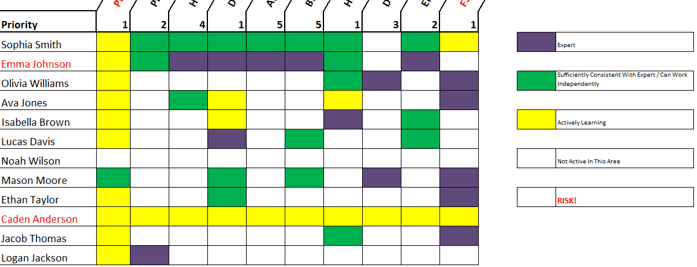3 Steps to Help Close a Skills Gap
Hiring the right employees is hard enough, but how do you also ensure they have the right skills?
If you’re like most manufacturers, your most experienced employees are also those closest to retirement. Replacing them without creating quality gaps won’t be easy or cheap – studies show that without a proper knowledge transfer plan, the cost to replace a senior engineer is between 300% and 500% of the senior employee’s salary. Putting the proper training procedures into place can help ensure no tribal knowledge is lost when your senior employees hand over the keys.
Before you begin, get senior resources on board with your training initiatives. Your senior resources will be your “feet on the street” so to speak. They will be the ones developing, running and evaluating your skills gap development plans, so it is vital they understand the importance of the training. They must also feel confident they aren’t training themselves out of job. You must remember that a solid knowledge capture begins not with the new hires, but with the people already doing the job day-in and day-out. Here are three steps to help your senior employees identify, address and close a skills gap:
1. Knowledge Matrix
Once you have buy-in across your organization, solid training procedures must be put in place. A knowledge matrix will allow you to effortlessly identify your strengths and weaknesses and quickly pair up your subject matter experts with your less knowledgeable employees. The knowledge silos within your matrix will help you organize and prioritize your upcoming development plans.

2. Skills Development Plans
Each employee deserves an individual development plan. It is important to keep the plans simple with one skill development plan per knowledge area per resource. Short (30 minutes to 1 hour) training sessions at the launch of each plan will help prevent information overload. The development plans should also include soft skills, such as customer interaction, attention to detail, etc. Require your senior resources to keep a pulse on the new employees as they work their way through their development plan. Conduct reviews midway through a skills development plan to monitor and review the progress made on each employees’ training. It is helpful to provide review guidelines, but they should be very thin and contain only the basic talking points required to train on the skill. The goal is to encourage a unique, one-on-one conversation between the mentor and mentee.
3. Skills Evaluations
Conduct detailed skills gap evaluations at the end of each development plan. The reviews should evaluate the success of an employee’s development plan and also help identify the next skills gap to address. The newly identified skills gaps will often lead to new skills development plans that help the employee move to their next role within your organization. It is important that employees are also required to assess their own skills. These evaluations should be held on a bi-annual basis to guarantee no skill gaps are missed.
Home-grown skills gap knowledge transfers can close your skills gap for good if you hire the right people, develop solid training procedures, and recruit the right employees to run the program. Using the steps above will put you and your team on the right path to success.
To learn more, attend our free webinar on August 11 to learn why you can’t afford to let your most experienced people take their knowledge with them when they retire. Ram Ramamoorthy, Strategic Manufacturing Solutions Manager, and John Cramer, Operations Manager at MAVERICK Technologies will discuss the critical role that employee training plays in retaining tribal knowledge. They will also share strategies on creating training documents and long-term training programs. The presentation will include a question-and-answer session so you can get expert advice on the spot.
Interested in reading more about closing Skills Gaps?
